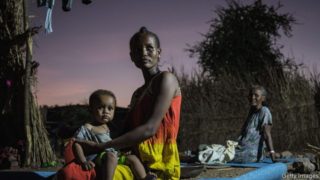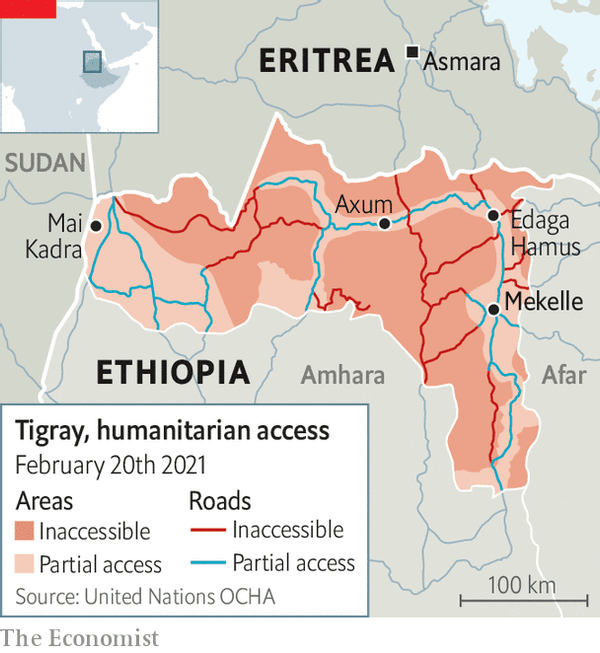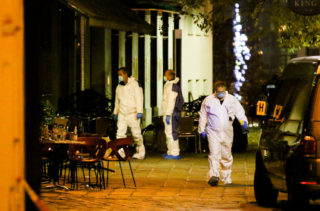Reports are mounting of atrocities in Ethiopia’s civil war
IN LATE NOVEMBER, Hailay Haileselassie said goodbye to his children and drove towards Edaga Hamus, a town in the mountainous northern Ethiopian region of Tigray, where his ageing parents live and his father is a priest. As churchgoers gathered in his father’s church on November 30th, the familiar murmur of prayer was replaced by the crackle of gunfire.
Witnesses say that Eritrean soldiers had entered the village that morning, looting homes and burning crops. Then they went from door to door, seizing young men and killing anyone who resisted. Scores died. Many families lost more than one member. Hailay was dragged from his parents’ home and shot in front of them. The killers drove off in his pickup truck.
Ethiopia’s government says it is conducting a policing operation against the ousted rulers of Tigray, the Tigrayan People’s Liberation Front (TPLF). Yet as phone connections to the region are restored, having been cut off since the fighting started on November 4th, credible reports of atrocities and war crimes are emerging. Many involve troops from neighbouring Eritrea, who are fighting alongside Ethiopian forces.
Perhaps the worst incident took place in Axum, one of Ethiopia’s holiest cities. According to Amnesty International, a rights group, Eritrean soldiers killed hundreds of civilians over two days in late November in retaliation for an attack on their camp. The soldiers picked out unarmed young men and killed them on the spot. They then plundered the city. “All we could see on the streets were bodies and people crying,” one survivor told Amnesty.
This massacre may be part of a wider pattern. Several videos have surfaced that appear to show Ethiopian soldiers standing among the bodies of civilians they have murdered. An investigation by Human Rights Watch, another monitoring group, found the Ethiopian army had shelled towns, including Mekelle, the capital of Tigray, killing at least 80 civilians. In early November several hundred people were massacred in the town of Mai Kadra. Probably most were Amharas murdered by a tplf militia. Tigrayans who have fled across the border to Sudan tell of attacks on civilians by Amhara militiamen and government soldiers in the same area.
Months of restrictions on journalists and ngos make it hard to know exactly what has been happening. The state-funded Ethiopian Human Rights Commission says it is investigating the Axum massacre and that its preliminary findings indicate that Eritrean soldiers killed a number of civilians in the city. It says it is also investigating reports of shelling in several parts of Tigray. Ethiopian officials including the president, Sahle-Work Zewde, have admitted that women in Tigray have been raped in large numbers. “We cannot pretend that we do not see or hear,” she said on February 19th. But she failed to identify the perpetrators, even though the victims said their rapists were soldiers in Eritrean and Ethiopian uniforms.
A high risk of famine persists. The government is blocking aid workers from parts of the region, perhaps because officials do not want them to expose further atrocities. According to the un, most of Tigray is still out of reach for aid deliveries. “For month after month we were denied access to Tigray, while massacres were taking place and women and children were bleeding,” said the head of the Norwegian Refugee Council, an ngo. If either soldiers or officials have deliberately stopped food from reaching the hungry, then that may have been yet another war crime.
Editor’s note: This article has been updated since going to press to include a statement by the Ethiopian Human Rights Commission.
By The Economist






